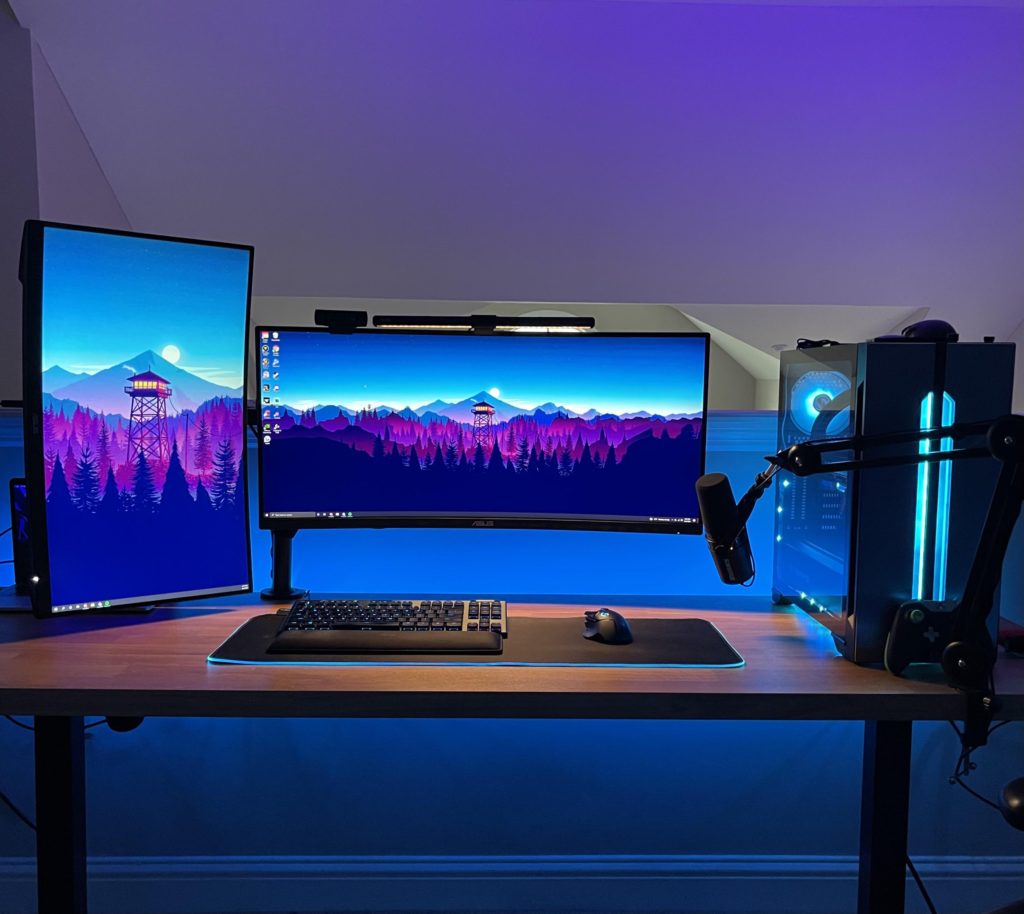Building your own gaming PC can be an exciting and rewarding experience, allowing you to tailor your system to meet your gaming needs while staying within your budget. In this guide, we’ll walk you through the process of building a gaming PC with standard components at an affordable price point.
1. Define Your Budget and Gaming Needs:
Before diving into the build process, determine your budget and the type of games you intend to play. This will help you prioritize components and allocate funds accordingly.
2. Choose the Right Components:
a. Processor (CPU): Look for a CPU that offers a balance of performance and affordability. AMD’s Ryzen 5 series or Intel’s Core i5 processors are popular choices for budget gaming builds.
b. Graphics Card (GPU): The GPU is crucial for gaming performance. Opt for a mid-range GPU like NVIDIA’s GTX 1660 or AMD’s RX 5600 XT, offering excellent value for gaming at 1080p resolution.
c. Motherboard: Select a compatible motherboard based on your chosen CPU. Ensure it has the necessary features and expansion slots for future upgrades.
d. Memory (RAM): Aim for at least 8GB of DDR4 RAM, preferably with a speed of 3000MHz or higher to maximize gaming PC performance.
e. Storage: Consider a combination of SSD for faster boot times and game loading, and HDD for additional storage capacity at a lower cost per GB.
f. Power Supply (PSU): Choose a reliable power supply with sufficient wattage to support your components and potential future upgrades.
g. Case: Select a case that accommodates your chosen components and provides adequate airflow for cooling.
3. Assemble Your Gaming PC: a. Prepare Your Workspace:
Clear a spacious, well-lit area to work on your PC build. Gather necessary tools such as screwdrivers and cable ties. b. Install the CPU and Cooler: Follow the manufacturer’s instructions to install the CPU into the motherboard’s socket and attach the CPU cooler. c. Install RAM: Insert the RAM modules into the motherboard’s DIMM slots, ensuring they are fully seated and aligned correctly. d. Mount the Motherboard: Secure the motherboard onto the case’s standoffs using screws, ensuring it’s properly aligned with rear I/O shield. e. Install Storage Drives: Mount the SSD and HDD into their respective drive bays or slots within the case. f. Install GPU: Insert the GPU into the appropriate PCIe slot on the motherboard and secure it with screws. g. Connect Cables and Power Supply: Connect power cables from the PSU to the motherboard, CPU, GPU, drives, and case fans. Ensure all connections are secure. h. Cable Management: Organize cables neatly to improve airflow and aesthetics within the case. i. Power On and Test: Connect the monitor, keyboard, and mouse, then power on the PC to ensure all components are functioning correctly.
4. Install Operating System and Drivers:
After successfully assembling the PC, install your preferred operating system (e.g., Windows 10) and necessary drivers for optimal hardware performance.
5. Enjoy Your Gaming Experience:
With your newly built gaming PC up and running, install your favorite games and start gaming! You now have a custom-built gaming PC that delivers excellent performance without breaking the bank.

Conclusion
Building a gaming PC on a budget requires careful planning and consideration of component choices. By following this guide and taking your time with the build process, you can create a capable gaming machine that provides hours of immersive gaming enjoyment.




